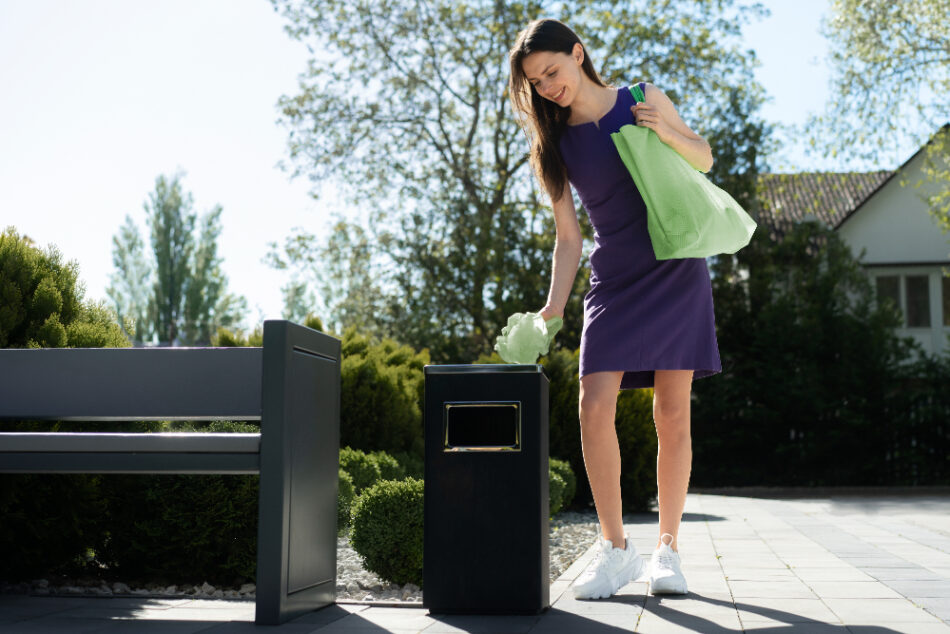Waste management in public spaces has always been a challenge for cities around the world. As urban areas continue to grow and the population increases, the volume of waste generated in public areas also rises. This has led to overcrowded bins, frequent trash pick-up, and a general strain on waste management systems. Solar compactor bins offer a smart solution to this issue, minimizing overflow and reducing the need for constant collection. The result is not just a cleaner environment, but also a positive impact on the health and safety of the public.
However, a new solution has emerged that promises to address these challenges efficiently and sustainably: solar compactor bins. These bins are rapidly gaining popularity for their ability to manage waste more effectively while contributing to a cleaner, greener environment. In this article, we’ll explore why solar compactor bins are becoming the smart choice for public spaces, offering long-term benefits for cities, residents, and visitors.
A Cleaner, More Efficient Solution to Overflowing Bins
In crowded public spaces like parks, streets, and event venues, waste bins often overflow, leading to trash spilling over onto the sidewalks or roads. This not only creates an eyesore but can also pose health hazards by attracting pests and creating breeding grounds for bacteria. Solar compactor bins provide a powerful solution to this problem.
These bins feature built-in compaction systems that automatically compress the waste inside, significantly increasing the capacity of each bin. This means that public trash bins no longer need to be emptied as frequently, helping to avoid overflows. By reducing the frequency of waste collection, solar compactor bins ensure that trash remains contained, creating a cleaner and more hygienic environment for the public.
Cost Savings and Operational Efficiency
One of the standout benefits of solar compactor bins is the significant cost savings they bring municipalities. Traditional waste bins require frequent collection, which drives up fuel consumption, labor costs, and maintenance expenses. Waste trucks often head out before bins fill up, wasting both time and money.
Solar compactor bins, on the other hand, are equipped with sensors that detect when the bin is full. These sensors send real-time alerts to waste management teams, allowing them to schedule collections only when necessary. This helps reduce the number of trips made by waste trucks, leading to fewer emissions, less fuel consumption, and lower operational costs.
In addition to saving money on collection and transportation, solar compactor bins feature a durable design that requires minimal maintenance. The compacting technology reduces wear and tear, which allows cities to spend less on repairs and replacements over time. This combination of reduced labor, fuel costs, and maintenance makes solar compactor bins a wise investment for any city or organization.
Environmentally Friendly and Sustainable Waste Management
With growing concerns about climate change and environmental degradation, many cities actively seek ways to become more sustainable. Solar compactor bins support cities in reaching their environmental goals by harnessing renewable solar energy. These bins use solar panels for power, eliminating the need for grid electricity or frequently recharged batteries.
Using solar power not only reduces reliance on fossil fuels but also helps reduce the carbon footprint of waste management operations. Solar compactor bins require less energy to operate, and by utilizing solar energy, they minimize the environmental impact of the waste management process. This makes them a green alternative to traditional waste bins, which often contribute to pollution due to the energy consumption of waste collection vehicles and equipment.
Smart Technology for Optimized Waste Collection
Solar compactor bins go beyond compaction and solar energy by incorporating advanced smart technology to optimize waste management operations. Each bin includes sensors that monitor the trash fill level. When the bin reaches capacity, the sensor alerts the waste management team, providing real-time data about when and where to collect waste.
This data-driven approach allows municipalities to streamline their waste collection processes. Rather than having waste collection trucks drive to every bin on a fixed schedule, they can now follow optimized routes based on the actual fill levels of the bins. This reduces unnecessary trips, saving time, fuel, and reducing emissions. Waste management becomes more dynamic and responsive, ensuring that resources are used efficiently and waste is collected promptly.
Conclusion
Adopting solar compactor bins in public spaces brings numerous benefits—from improving waste management efficiency to promoting sustainability and cutting operational costs. These bins make a smart investment for cities aiming to create cleaner, more efficient, and environmentally friendly public spaces. With their ability to compact waste, integrate smart technology, and harness renewable energy, solar compactor bins transform how urban areas manage waste.
By adopting solar compactor bins, municipalities can optimize their waste collection operations, reduce carbon emissions, and ensure cleaner and safer environments for residents and visitors. As cities continue to embrace innovation, solar compactor bins will play an essential role in shaping the future of waste management, making them the smart choice for any city committed to sustainability and efficiency.








